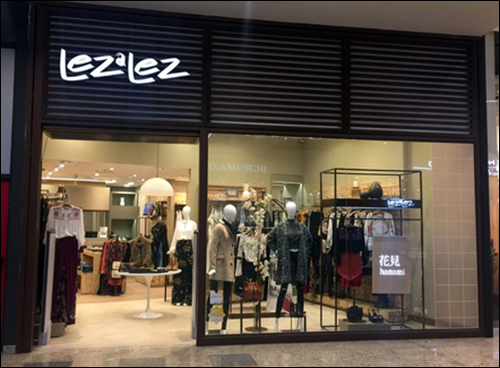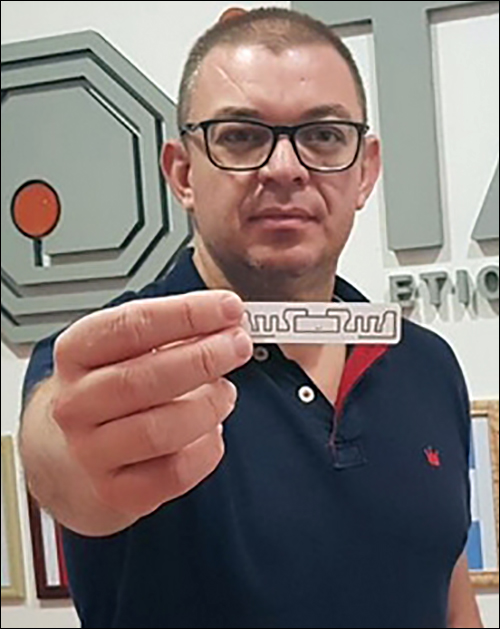Lez a Lez, a Brazilian retail franchise headquartered in the city of Asuncion, Paraguay, has adopted radio frequency identification technology to control everything from the receipt of goods and inventory management to sales. Following successful trials of the RFID system at the company’s concept store, other branches will now begin to implement the same processes.
According to Lez a Lez’s management, the store maintains a stock of approximately 5,000 pieces and has an average monthly turnover of 1,600 products. In the evaluation of its managers, what differentiates the franchise from its competitors is that it constantly seeks out new innovations and follows the latest fashion trends for its target audience—namely, women.
Prior to the RFID system’s implementation, the store’s operations were carried out via bar codes, including the arrivals and departures of goods, as well as the realization of inventories. This was time-consuming and expensive, the firm reports, and resulted in a high number of counting errors, which is typical of bar codes.
Due to the complexity and slowness of the processes, products took a long time to reach the sales area. In addition, when it came time to conduct inventory counts, it took six employees working for 12 hours to manually read all of the bar codes, item by item.
“Before RFID,” says Samuel Kandler Martinez, the director of Lez a Lez’s retail network, “we could not check goods that came from the distribution center to the store because bar-coding was item by item, which made the process very slow. It took around two and a half hours to process an average of 450 pieces.”
“With RFID technology, we were able to count the same 450 pieces within 15 minutes and with the boxes sealed, taking into account information about the color and size of the products,” Martinez adds. “This has given us more speed and efficiency in our processes, allowing products to reach the sales area already counted, and with a guarantee of the pieces’ traceability.”
Thanks to the RFID system, the company reports, inventory counts have become faster and more accurate, reducing the amount of time required for the process from 12 hours for bar codes to only 50 minutes. What’s more, the store can ensure that products are shipped out using a first-in-first-out (FIFO) method. “So we can run a reading with RFID during the day and check if there are different quantities than the ideal on the sales floor, and request the immediate replacement of the inventory,” Martinez explains. “In this same reading, we can check if there are items in the gondolas that are already expired.”
Another benefit that RFID has provided is an improvement in the tracking of goods. “We control the transit of goods that circulate between areas through an RFID portal,” Martinez says. “By moving products past the antennas, we can determine if merchandise goes out of stock and if it went to the store.”
This deployment does not follow GS1‘s EPC Gen 2 RFID standard. However, all devices meet standardization specifications according to iTag, a provider of RFID technology.
The RFID readings are made using a Zebra Technologies RFD8500 reader to check merchandise coming to the store, as well as during inventory counts. A Zebra FX7500 reader with four AN480 antennas control goods that are moved from the stock area to the store floor, and a Zebra FX7500 reader with an AN610 antenna is utilized for billing the products within each carton.
The company has also deployed 10,000 disposable iTag adhesive labels, measuring 7 centimeters by 2 centimeters (2.8 inches by 0.8 inch), with an embedded tamper-resistant EM4124 chip from EM Microelectronic. According to Sérgio Gambim, iTag’s CEO, the project’s biggest challenge was to respect the layout of the Lez a Lez labels, which have metalized letters. “We analyzed the tag,” he says, “and after validations and tests, we were able to apply the EM4124 RFID sticker with 100 percent reading.”
Following the in-store RFID deployment, the company reports that it has reduced its process time as goods are moved from the distribution center to the store. In addition, it has eliminated divergent deliveries, increased accuracy and shortened the amount of time required to complete inventory counts. The firm has gained control of stock items, and can now track parts throughout all processes.
“We will now expand RFID to six other stores in Paraguay and focus on interacting with customers, taking control of the goods that enter the dressing room,” Martinez states. “In this way, with RFID, we can suggest combinations of parts that are in the field of sales to customers, providing a new buying and service experience.”
The proprietary enterprise resource planning (ERP) system from Lez to Lez is integrated with iTag’s RFID middleware, which tracks all regulatory issues in Paraguay. iTag also offers web service for inventory and stock control. The database operates remotely via cloud computing.
Here’s how the RFID process works: Tagged goods leave the DC and arrive at the store, where a count is performed via an RFID reader. The same reader will be used throughout the day to for the purpose of store audits, to monitor for breakage and to make sure products are shipped on a FIFO basis. When necessary, partial or total inventory counts of the store can be carried out.
The movement of stock is managed via the RFID portal, which is always activated during the store’s hours of operation. The sales process is carried out by an RFID reader that remains in the box.
By comparing the RFID results with the previous bar-code processes, the company has improved its goods-receiving process and has automated its manual inventory counts. The prior process was quite error-prone, the company notes, since some merchandise was overlooked and not counted.
Another benefit is that conducting regular, on-demand inventor counts eliminates the need, every three months, to mobilize the store’s entire staff to perform a full count—which, according to the company, typically took more than 12 hours to complete and resulted in a list that was riddled with errors.
According to Martinez, iTag was instrumental in Lez a Lez’s RFID deployment. “Even though it was in another country,” he states, “the company participated in all the project’s details, from the first tests to the present, and also provided technical support.”
“We met iTag after a visit from Sérgio Gambim in Grupo Alianza—our next RFID deployment—in Asunción, Paraguay, when he came to demonstrate RFID technology,” Martinez says. “We were interested and decided to meet at iTag’s office in São Paulo. Then, after seeing the technology in use, we started the partnership with tests in the store.”
Deploying RFID was a positive experience for the company, Martinez recalls. “We make it easier for our employees to work because now, instead of reading items piece by piece, a worker can read dozens of pieces within seconds,” he says. “We have gained confidence in the processes performed, because we count on item traceability, and no additional employees will be needed to carry out store inventories.”
For iTag, Gambim reports, this represents its first international client. “For 2017, iTag was looking for a goal beyond growth in the Brazilian market,” he explains. “We wanted to expand the business to a Latin American country.” According to Gambim, Paraguay was chosen mainly due to its economic growth, which reached 6.6 percent during the first quarter of this year.




